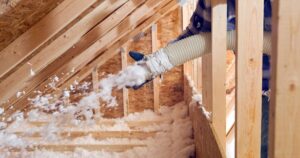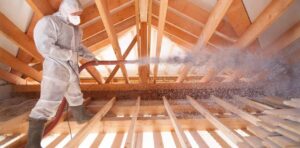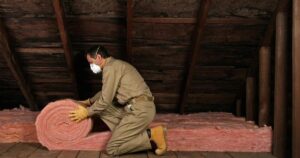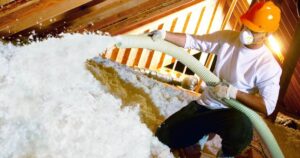When it comes to home improvement projects, insulating your roof from the outside is a crucial task that can greatly enhance your living space’s comfort and energy efficiency. Proper roof insulation is essential for maintaining a consistent indoor temperature, reducing energy bills, and ensuring the longevity of your home.
In this comprehensive guide, we’ll walk you through the process of insulating a roof from the outside, providing detailed information and expert tips to help you make the most of this essential home upgrade.
Understanding the Importance of Roof Insulation
Before we dive into the nitty-gritty details of how to insulate a roof from the outside, let’s explore why roof insulation is so critical.
- Energy Efficiency
One of the primary reasons to insulate your roof is to improve your home’s energy efficiency. When your roof lacks adequate insulation, it allows heat to escape during the winter and enter during the summer. This constant temperature fluctuation puts added strain on your heating and cooling systems, resulting in higher energy bills.
- Comfort
A well-insulated roof ensures consistent indoor temperatures. It keeps your living space warmer in the winter and cooler in the summer, making your home more comfortable year-round.
- Cost Savings
Reducing your energy consumption means lower utility bills. Over time, the cost savings from reduced energy usage can help recoup the initial investment in roof insulation.
- Environmental Benefits
Lower energy consumption also means a reduced carbon footprint. Insulating your roof is an environmentally responsible choice that contributes to a more sustainable future.
Materials for Roof Insulation
Now, let’s discuss the various materials you can use to insulate your roof from the outside. The choice of insulation material depends on factors such as climate, budget, and personal preferences.
Fiberglass Insulation
- Fiberglass is a popular choice for roof insulation due to its cost-effectiveness and excellent insulating properties. It comes in batts, rolls, or loose-fill forms and is easy to install.
Cellulose Insulation
- Made from recycled paper products, cellulose insulation is an eco-friendly option. It provides effective insulation and is treated with fire retardants for safety.
Spray Foam Insulation
- Spray foam insulation offers superior insulating properties and seals gaps effectively. It can be more expensive than other options but provides outstanding thermal performance.
Rigid Foam Insulation
- Rigid foam boards are a great choice for insulating roofs with limited space. They are moisture-resistant and provide excellent thermal insulation.
Reflective or Radiant Barrier Insulation
Reflective or radiant barrier insulation is ideal for hot climates. It reflects heat away from the roof, keeping the interior cooler. Steps to Insulate Your Roof from the Outside.
Assess Your Roof
Before you start insulating, inspect your roof for any damage or leaks. It’s essential to address these issues before proceeding with insulation.
Choose the Right Insulation Material
Based on your climate, budget, and insulation goals, select the appropriate insulation material.
Prepare the Work Area
Ensure safety by wearing protective gear, including gloves and safety goggles. Clear the workspace of debris and obstacles.
Install Ventilation
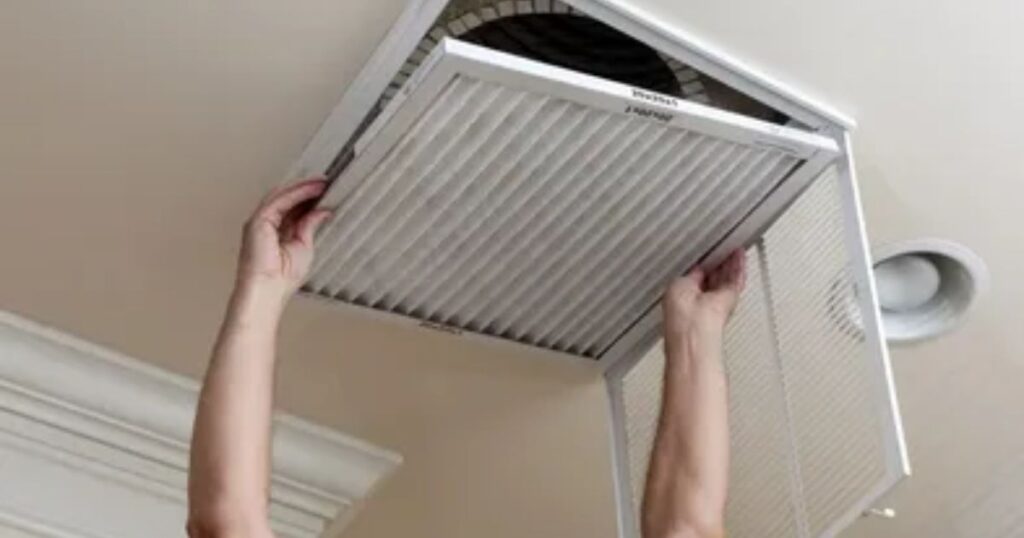
Adequate roof ventilation is crucial to prevent moisture buildup. Ensure that vents are in place and functioning correctly.
Lay Insulation
Install the chosen insulation material, following the manufacturer’s guidelines. Ensure a snug fit to prevent heat loss.
Seal Gaps and Joints
Use a sealant to close any gaps or joints in the insulation, ensuring a tight, well-sealed barrier.
Consider a Roof Coating
Applying a reflective roof coating can enhance insulation and protect your roof from UV damage.
Benefits of Outsider Roof Insulation
Insulating your roof from the outside offers several advantages:
- Improved Energy Efficiency
Reduces heat loss and gain, leading to lower energy bills.
- Enhanced Comfort
Maintains consistent indoor temperatures year-round.
- Increased Home Value
Well-insulated homes are more attractive to potential buyers.
- Environmental Responsibility
Reduces carbon footprint and energy consumption.
Maintenance and Considerations
Once your roof is insulated from the outside, regular maintenance is crucial to ensure it remains effective.
- Regular Inspections
Check for any damage or signs of wear and tear.
- Clean Gutters
Ensure proper drainage to prevent water damage.
- Reapply Coatings
If you’ve used a reflective coating, consider reapplying it as needed.
Certainly, let’s continue with more information on this important topic.
DIY vs. Professional Installation
When it comes to insulating your roof from the outside, you might be wondering whether to tackle it as a do-it-yourself (DIY) project or hire a professional. Here are some considerations:
DIY Installation
Cost Savings
- DIY insulation can be more cost-effective, especially if you’re comfortable working on home improvement projects.
Learning Experience
- It’s an opportunity to learn and gain valuable skills.
Professional Installation
- Expertise
Professionals have the experience and expertise to ensure proper installation, reducing the risk of mistakes.
- Time Efficiency
Hiring a professional can save you time and effort, allowing you to focus on other aspects of your home.
The choice depends on your level of comfort with DIY projects and the complexity of the insulation job.
Maintaining Roof Insulation
Proper maintenance is essential for the longevity and effectiveness of your roof insulation. Here are some tips to keep in mind:
Regular Inspections
Inspect your roof and insulation at least once a year, preferably before the onset of extreme weather conditions. Look for signs of damage, mold, or moisture buildup.
Clearing Debris
Remove leaves, branches, and other debris from your roof to prevent clogs in your gutters and downspouts. Proper drainage is vital to avoid water damage.
Addressing Issues Promptly
If you notice any problems, such as damaged insulation or leaks, address them immediately. Delaying repairs can lead to more extensive and costly issues.
Reapplying Coatings
If you’ve used a reflective roof coating, be prepared to reapply it as needed. Coatings may deteriorate over time, and maintaining their effectiveness is crucial for energy efficiency.
Conclusion
Insulating your roof from the outside is a substantial investment in the comfort, energy efficiency, and sustainability of your home. Whether you choose to undertake this project as a DIY enthusiast or hire a professional, the benefits are substantial.
With regular maintenance and a focus on factors such as materials, climate, and budget, you can enjoy a well-insulated roof that will serve your home well for years to come.


